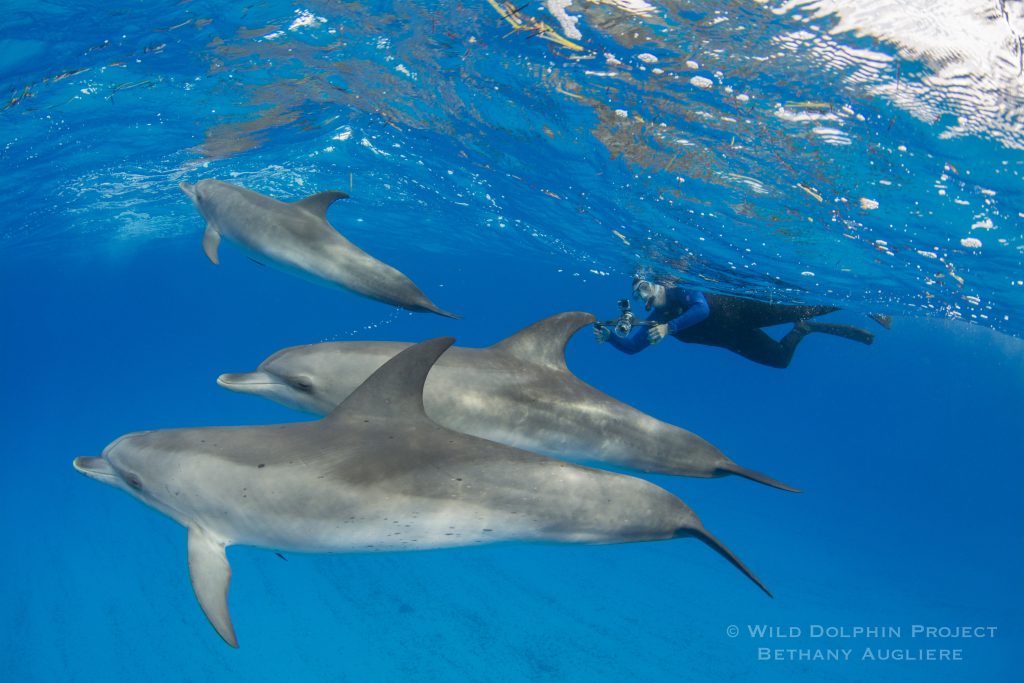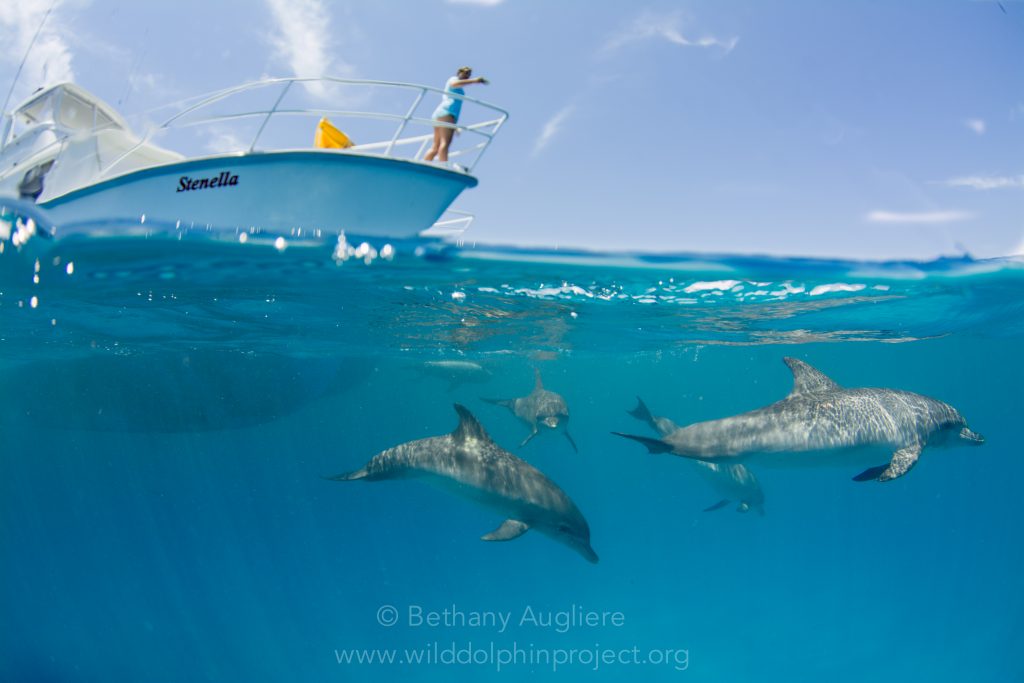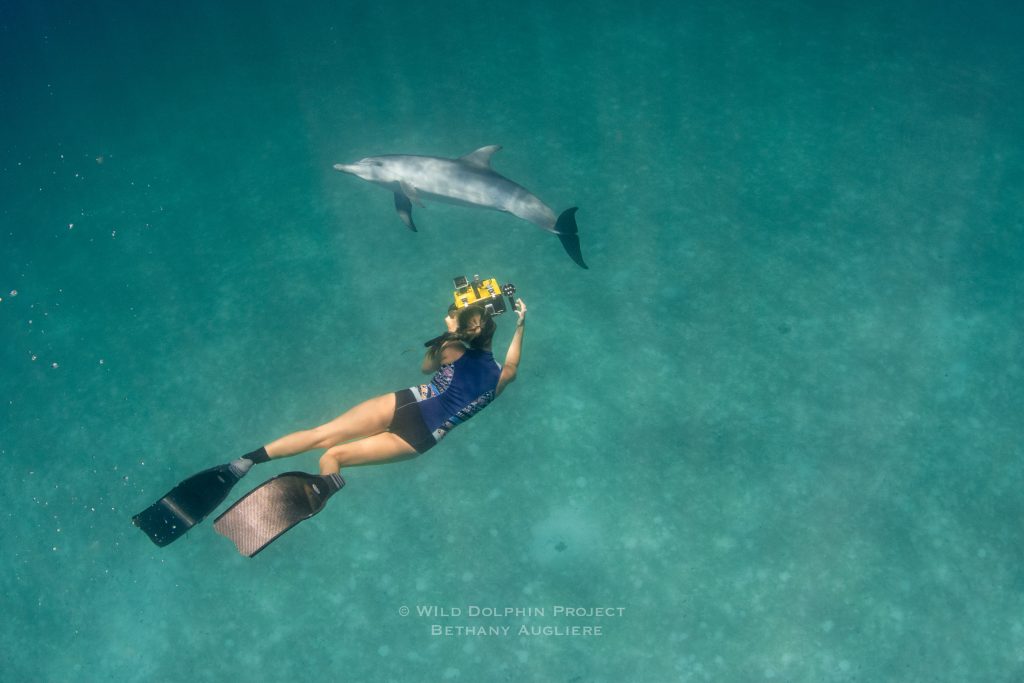When people learn about the work of the Wild Dolphin Project, one of the first questions they ask is if we use scuba. People are curious how we work in the water with the animals. The answer however, is no, we don’t use scuba. How do we work? Keep reading.
Since 1985, Dr. Denise Herzing has been researching wild Atlantic spotted dolphins in the Bahamas. Like Jane Goodall, who studied the chimpanzees in Gombe, Denise wanted to immerse herself in the dolphins’ world to better understand their world, “in their world, on their terms.” To do that, she spent years gaining their trust and habituating them to her presence. In this case, habituation simply means that the animals continue on with normal behaviors in front of humans, such as feeding, mating, nursing and even fighting. This way, Denise could study and analyze their behavior and communication. More than 30 years later, she’s now tracked four generations of dolphins, published dozens of scientific papers in peer-reviewed journals and been featured in magazines, such as National Geographic, and documentaries many times.
In the Field
During the field season, WDP crew head over to the Bahamas on our 65-foot power catamaran, Stenella to live at sea and study the dolphins. We spend anywhere from a week to 10 days at sea before coming back to Florida to refuel and replenish provisions.
While in our study area, we anchor in a shallow protected area at night and pull anchor in the morning around 9:00am to start looking for dolphins. We spend a lot…..a lot…..of the day driving around searching for animals. There is a lot of down time, when people can rest, read, and get work done. One team member is always on ‘Dolphin Watch’ in hour-long shifts. Once someone sees dolphins, they stomp to let everyone inside know. Then, we start gearing up to get in the water to collect data in small teams of 4 or 5. As Denise often says, it’s a little like being a firefighter. It’s a lot of sitting around and waiting, then dolphins show up and it is go time!
The team going in the water puts on their with their masks, fins and snorkels. Researchers and interns grab video cameras, underwater cameras and fecal belts (to collect fecal samples for genetic analysis). While this is happening the topside crew are keeping an eye on the dolphins. When everyone is ready, the captain sets us up so we can slip into the water from the side of the boat with the dolphin group for an encounter.
Snorkeling With Dolphins
So, why don’t we use scuba? There are a couple reasons.
The first reason is that it’s simply unnecessary and impractical. The dolphins are in shallow water averaging around 16 to 40 feet and they spend a lot of time at the surface. So, we stay at the surface to observe them. But just because they are habituated to humans, doesn’t mean they make it easy for us to follow them. While we observe from a distance, we’re still swimming hard to keep up and follow their behavior. If we had to do this with scuba gear, we’d be way too slow!
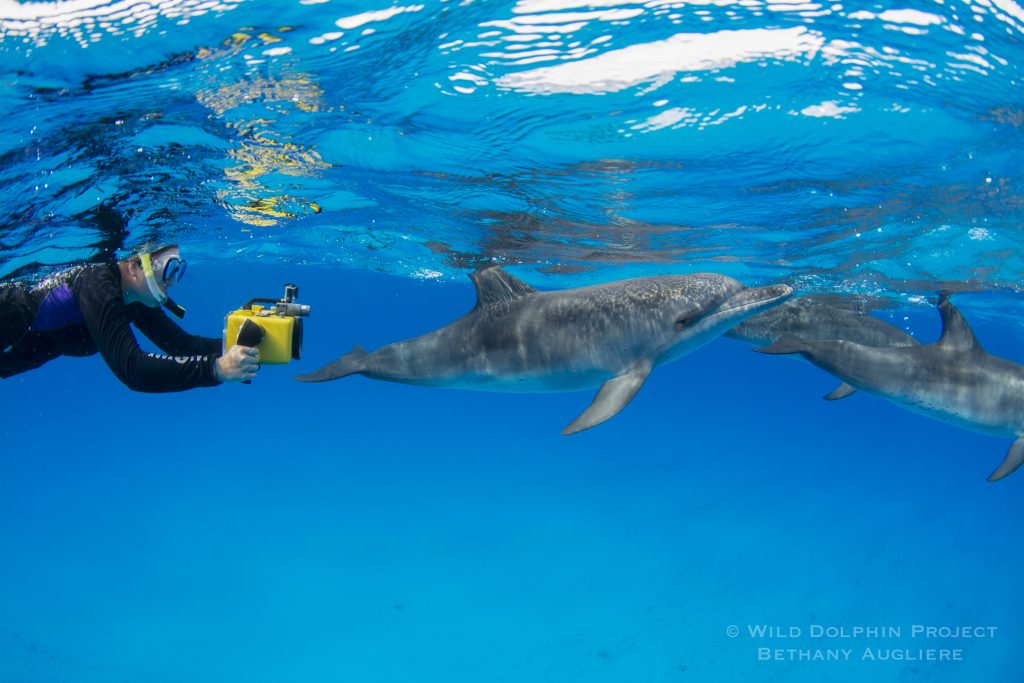
Research assistant Cassie Volker at the surface to collect video data. Snorkeling allows the scientists to better keep up with the animals, compared to scuba diving.
If the dolphins are at the bottom, most of the time we can still see them well enough to film to collect data because the water is clear. We aren’t trying to get footage good enough for National Geographic! We don’t do a lot of diving down because we don’t want to disrupt their behavior if they are feeding or mating. For the most part, we practice passive observation. So again, scuba would be unnecessary.
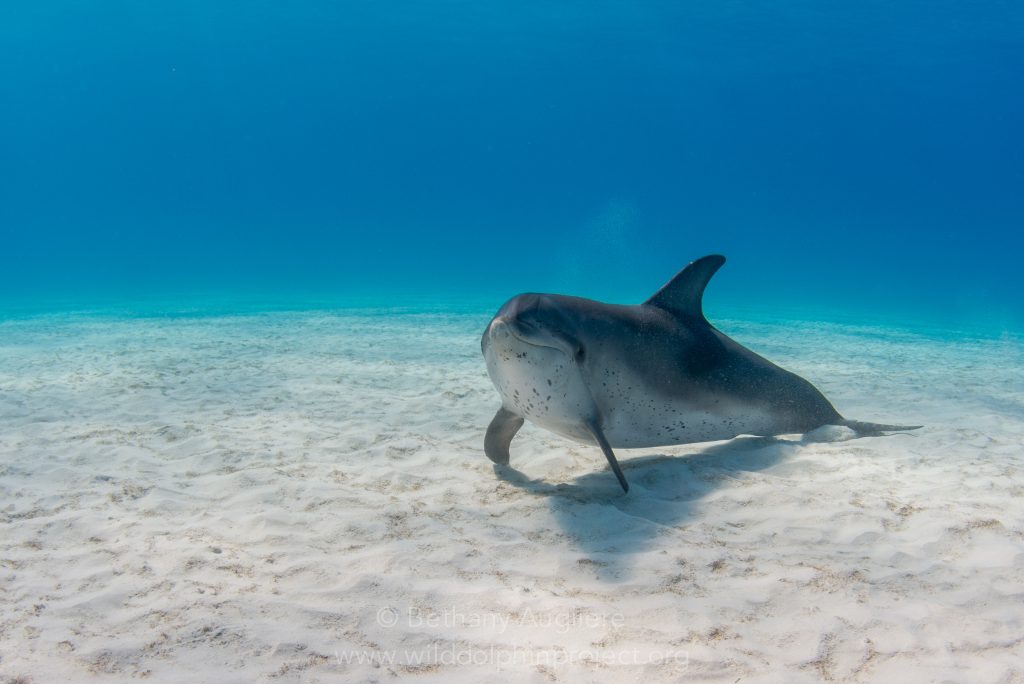
Researcher and photographer Bethany Augliere freedove to play with this curious juvenile. WDP staff avoid diving down without reason to avoid disrupting important behavior like nursing and mating.
When we do dive down from the surface, it’s for a reason, such as documenting the kind of fish a dolphin might be hunting. Other times, we might be with a group of juveniles who want to play, and they seem to like it when people dive down with them. As long as the dolphins are initiating the interaction, we’ll play back. This keeps the dolphins engaged and allows us more time to take photos for photo-identification and record vocalizations for our communication research.
So, when a researcher needs to dive down, they simply hold their breath (also called freediving)! In fact, a few years ago our crew took a freediving course with Drift Freediving to learn more about safety and technique. To do this kind of field work requires comfort in the water and strong swimming skills.
Want to join us in the field? We take guests on our research expeditions, who can join us in the water to observe the dolphins. Learn more about how you can participate here. We’re taking bookings for our 2019 field season and still have some spots available.
Photos by WDP research associate Bethany Augliere.

